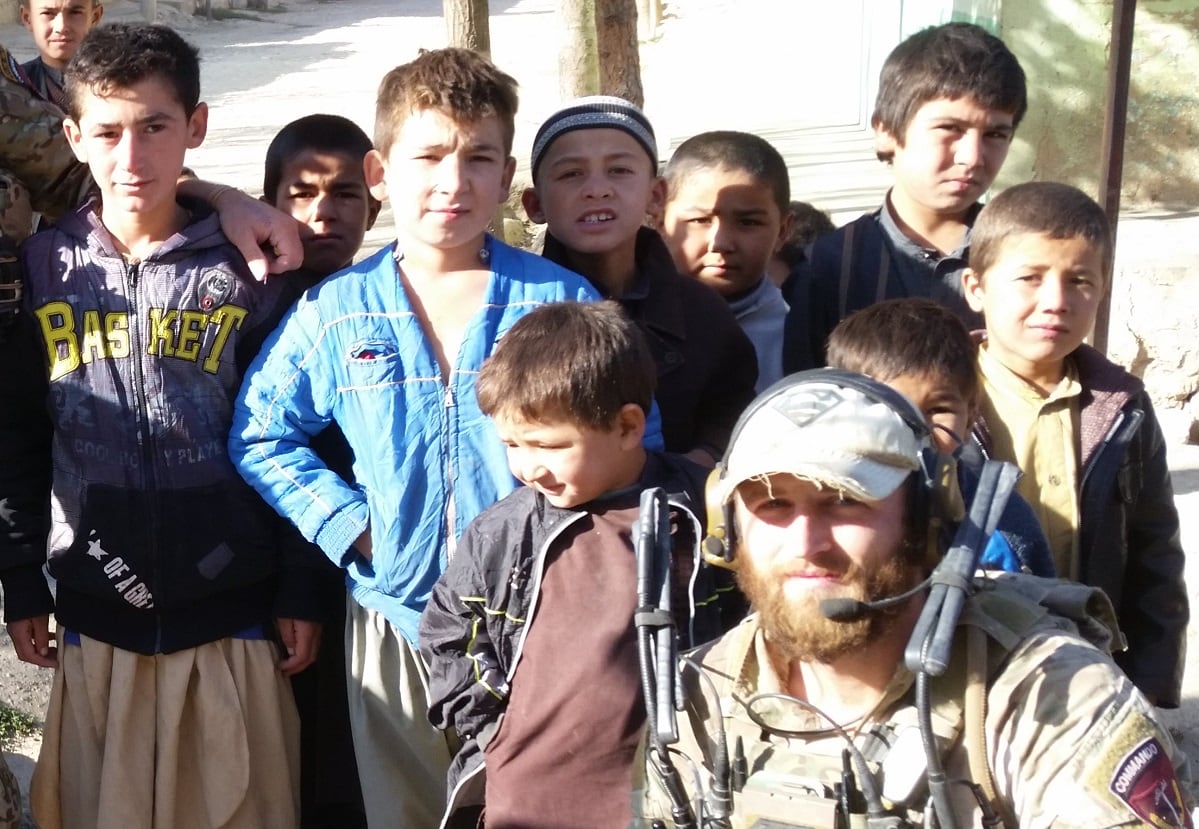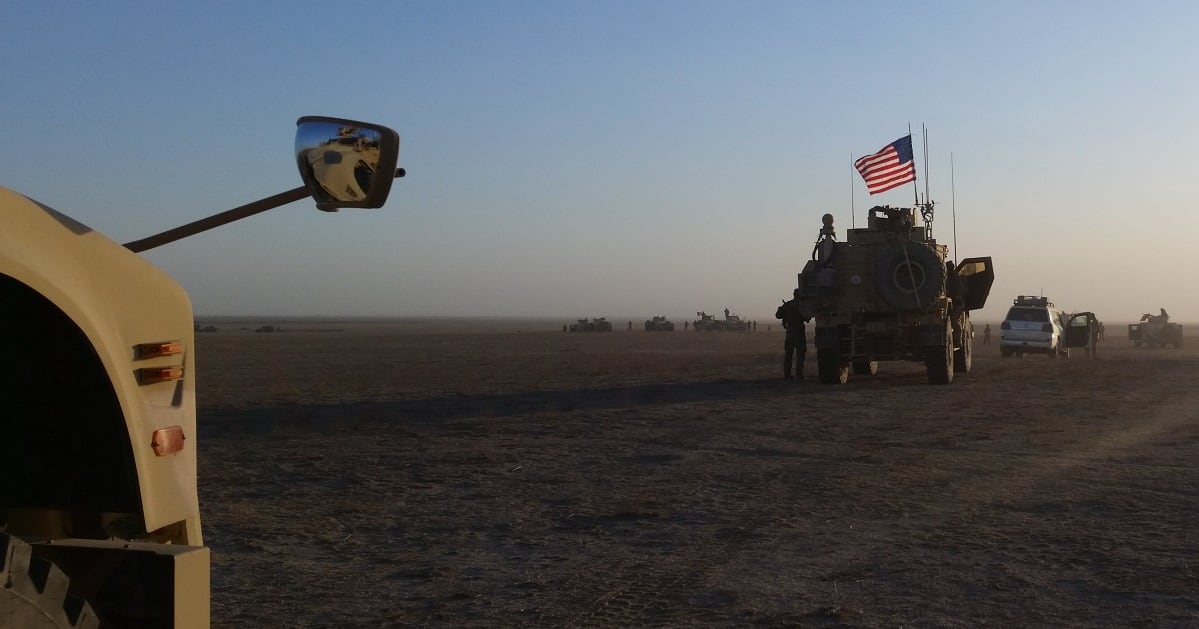Air Force Times’ choice for 2019 Airman of the Year is a combat controller whose bravery during hours upon hours of fierce battle in Afghanistan — during which he kept fighting after repeatedly being wounded and struck by enemy fire – may result in him receiving the Silver Star.
Tech. Sgt. Cody Smith, of the 26th Special Tactics Squadron at Cannon Air Force Base in New Mexico, was driven to serve and eagerly chose one of the most dangerous career fields in the Air Force. His supervisor, Lt. Col. Gregory J. Walsh, lauded him for being a “man of principle” who always goes beyond what is expected of him, because it’s the right thing to do.
“With a wife and two children at home, he could easily justify working in a much less dangerous profession, but he does not,” Walsh said. “Cody believes he has a duty to use his time, talent and gifts to help protect people. He has a pure heart and purpose in life and truly ‘walks the walk’ of selfless service.”
That belief in service extends beyond the military; Smith regularly volunteers in his community. He and his wife also host a weekly marriage group through their church, and when he lived in Florida, he volunteered to help the poor through the Helping Hands charity.

Smith, 28, of Indianola, Iowa, joined the Air Force in March 2011. He said he knew from a young age he would leave his rural home in southern Iowa for greater things. He first had his heart set on joining the Navy, but his plans got sidetracked when he dislocated his shoulder in high school, requiring arthroscopic surgery. That disqualified him from all military branches for a while, and required a lengthy process to get a waiver approved.
After going to college for about a year and waiting to hear from the military, the Air Force was the first service to call and offer him a waiver. He was interested in special operations, so the Air Force offered him pararescue or combat control. Since he wasn’t interested in the medical career, he opted to try to become a combat controller.
It was the right move, he said. The challenge of becoming a combat controller, and its mission set, drew him in. The prospect of being the only airman embedded with other services’ units, having so much responsibility while deployed and with all eyes on him, intrigued and excited him, and motivated him to push through the demanding training.
“I wanted something that was going to be physically demanding, that was going to push me beyond what I had really experienced in life up until that point,” Smith said. “I can undoubtedly say that I would not go back and choose a different path, even if I was given the opportunity to do so,” Smith said. “Combat control has been an unbelievable experience.”
Smith deployed twice to Afghanistan, in 2015 and 2018, once to Iraq or Syria for Operation Inherent Resolve in 2017, and once to an undisclosed location in the Middle East with an Army 7th Special Forces Group crisis response force in 2014.
While in Afghanistan, Smith supported operations in the northern, eastern and central parts of the country.
A tough two weeks
During last year’s deployment, Smith took part in a series of battles during a harrowing two-week operation that pushed him to the limit — and showed his heroism to all.
Smith and his Army special forces team — for which he was serving as its sole joint terminal attack controller, charged with calling in airstrikes — were in Faryab province during national parliamentary elections in October 2018. His team was ordered to drive from Mazar-E-Sharif to Maymana Airfield in northwest Afghanistan. Taliban forces that had created a stronghold in the area, taken control and dug in so deeply that Afghan forces alone couldn’t push them out. So Smith and his team were ordered to break them up.

After hooking up with about 65 Afghan troops, the team of 12 Green Berets, Smith, a pararescueman, five Army infantry drivers, and an intelligence personnel had sporadic run-ins with Taliban fighters during the drive in to Maymana. On Oct. 7, they got into a “pretty intense firefight,” Smith said.
The team was on the north side of a large village in the Shirin Tagab district, he said, but poor weather — the cloud deck ran from 1,000 to 16,000 feet — meant they didn’t have any air support or surveillance before moving into the village. The Army special forces team, Smith and some Afghan partner forces drove ahead, but ran into roadblocks — chest-high piles of gravel and concrete — forcing them to take a “serpentine” path that slowed their movement. About half of those roadblocks also had hidden IEDs that needed to be cleared.
Once the convoy got into the village, the enemy sprung their ambush, opening up with PKM machine gun fire, AK-47s, rocket-propelled grenades and recoilless rifles. AH-64 helicopters launched from Mayamana to fly under the poor weather and support the team, striking targets all over the battlefield, including, with Smith’s help, targets close to the team’s vehicles.
Smith guided F-16s flying overhead as they dropped 500-pound bombs through the thick clouds at danger-close range, within 100 meters of friendly forces.
After the eight- to 10-hour Oct. 7 battle, the team returned to Maymana and stayed for a day, then pushed west toward Faryab, where they ran four more operations over the course of several days. They again returned to Maymana, refit, and headed back to Shirin Tagab.
That’s when, on Oct. 14, they encountered the fiercest fighting of the operation, against a massive force of 600 Taliban fighters.

As they approached the southern portion of a village, they saw an 18-wheel truck on fire on the side of the road, partially blocking the route. Smith believes the billowing black smoke served to signal Taliban fighters in the village that the Americans were coming.
They ran into a similar setup as the previous battle. The fighters had spent the last week building more barricades and winding roadblocks. An IED went off in front of the convoy, launching another ambush with more overwhelming gunfire and RPGs streaking their way. This time, the Taliban poured mortar after mortar onto the convoy as well.
The Army special forces had set up a mortar tube in the back of their MRAP All-Terrain Vehicle, or M-ATV, so they could keep firing while maneuvering through the village and keep Taliban fighters at bay. Smith also fought back, firing his rifle and throwing hand grenades to push the fighters back.
Outgunned
At some point, the convoy ran into a blockade and the situation grew even more chaotic. There were dozens of civilian casualties, and women from the village were carrying their wounded children towards them, seeking medical help as the firefight continued to rage. Smith left his vehicle and exposed himself to machine gun fire while he assessed the injured and wounded civilians, and bullets struck him in his body armor.
The team received machine gun fire from two sides, and fighters kept coming, as they tried to defuse IEDs.
Smith was firing to the west, and they heard Taliban fighters on the radio identify his position so they could target him with machine gun fire and mortars. As he and the other troops tried to keep the enemy from overrunning the convoy, a mortar round struck barely three to five meters from him.
It was hard to recover from the blast, Smith said. When he came to, all he saw was dust. He had sustained a concussion, was overwhelmingly nauseous and began vomiting. Still, he declined medical care and fought on — for five or six more hours.
After a vehicle was disabled, Smith tried to help provide security for his commander on the ground. Then a rocket-propelled grenade streaked toward his position and exploded as he re-entered his vehicle. He was injured by the blast, but again declined medical attention to keep fighting.
The team made it to the north side of the village, out of the brunt of the attack, but were still receiving harassing fire. The team was able to medevac a wounded teammate, whom Smith helped move. A pararescueman and other Army and Afghan troops fought for an hour to recover and treat another Afghan partner who had been shot in the hip. After the battle concluded, they made their way back to camp at Mazar-E-Sharif in a 12-hour drive.
For the heroism he displayed during the Oct. 14 battle, Smith has been nominated for the Silver Star.
With Smith’s help, aircraft dropped 11 danger-close strikes that day, including nine 500-pound bombs within 120 meters, and one 500-pound bomb at about 50 meters. The actions he took resulted in the deaths of 195 enemy fighters, the wounding of 11 moreand the destruction of 18 fighting positions. He also saved the lives of many American and Afghan partner troops.
Smith was one of two team members who sustained traumatic brain injuries during the course of the two-week operation. He’s simply amazed that no one was killed and that the number of injuries was so low; there was a gunshot wound to one American’s hand and the Afghan who was shot in the hip, and another American took a shrapnel wound to his shoulder.
As Smith tells the story of those battles, he stresses the accomplishments of the team far more than his own actions.
“To go into a fight like that, to be vastly outnumbered and to have an unbelievable amount of gunfire coming at you, and to sustain such little casualties, speaks volumes about how amazing that Army special forces team operated, as individuals and as a team and as a leading partner force [to] Afghan forces,” Smith said. “You could feel the pressure on you. You could feel the amount of gunfire in the air. I was very thankful and happy that I got to be a part of that operation, and that I had a hand in making sure everybody made it home safe.”
“I am a far cry from anything special,” he said.

Stephen Losey is the air warfare reporter for Defense News. He previously covered leadership and personnel issues at Air Force Times, and the Pentagon, special operations and air warfare at Military.com. He has traveled to the Middle East to cover U.S. Air Force operations.



